The deadly flaws of the longest guided busway
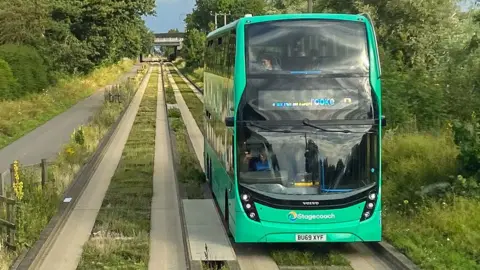 Getty Images
Getty ImagesThe chief executive of a council fined £6m after three deaths on its guided busway has promised it has "changed our approach for the future".
Jennifer Taylor, Steve Moir and Kathleen Pitts died after collisions on the Busway, which runs from Huntingdon to Cambridge, between 2015 and 2021.
Cambridgeshire County Council admitted two safety breaches and was ordered to pay the fine over three years, following the Health and Safety Executive (HSE) prosecution.
We look at the history of the guided busway, what went wrong, and what is being done to make it safer.
What is a guided busway?
 Jozef Hall/BBC
Jozef Hall/BBCA guided busway uses specialised infrastructure to direct buses along pre-determined and dedicated paths.
Raised concrete kerbs are set at specific distances apart to act as a physical guide for the vehicles.
They are equipped with guide wheels to keep them on the track, but also have wheels suitable for drivers to manually steer them along regular roads.
Its aim is to provide speedier and more reliable journeys for passengers, because the buses are segregated from other traffic along their dedicated routes.
Why was Cambridgeshire's Busway built?
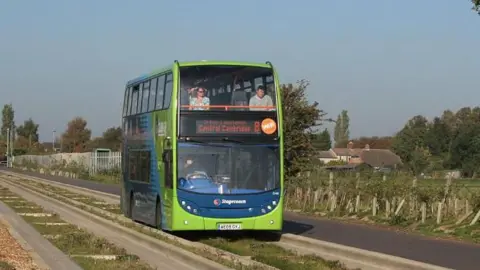 Geograph/Alan Murray-Rust
Geograph/Alan Murray-RustThe 16-mile (26km) Busway runs between Cambridge, St Ives and Huntingdon and is believed to be the world's longest guided bus route.
Operated by the council, it opened in August 2011, two years late and at a cost of £116.2m, with much of it built on a former railway line.
The transport system was introduced in a bid to ease congestion on the A14.
It was also intended to provide an alternative mode of transport for people living in planned housing developments along the route, such as the new town Northstowe.
Between 2011 and 2024, it had seen 33 million passenger journeys, according to the council.
When did safety issues first arise?
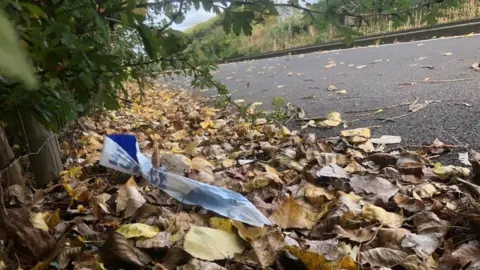
Shortly after the transport system opened in 2011, a bus made an emergency stop and a passenger had hit her head and fractured her skull.
It was one of several accidents that had never been reported to the HSE, the court was told.
Yet, there was no risk assessment in place until 2016 - a fact Judge Mark Bishop described as "particularly shocking".
He criticised the council's "rigid and blinkered response" to the fatalities, as well as numerous near-misses and accidents.
These included an incident involving Leon Leeson, who was left with memory loss, a broken collarbone, a tear in his liver and the loss of hearing in one ear.
What happened to each of the victims?
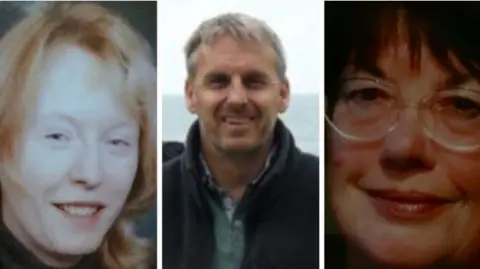 Supplied
SuppliedJennifer Taylor, 81, was hit by a bus when she crossed the track on foot at Fen Drayton in November 2015.
Ms Taylor had got off a bus on the Busway to return to an earlier stop she had missed when she was then struck by another bus while still crossing the lane, the court heard.
Steve Moir, 50, fell into the path of a bus after clipping a kerb with his bicycle that separated him from the Busway in Cambridge, in September 2018.
Pedestrian Kathleen Pitts, 52, was struck by a bus on the same stretch in October 2021.
The speed limit for buses at the time of Mr Moir's death had been 56mph (90km/h), and by the time of Ms Pitts' death this had been reduced to 30mph (48km/h).
A permanent protective fence was installed along the route in March 2024.
Why did the council not act sooner?
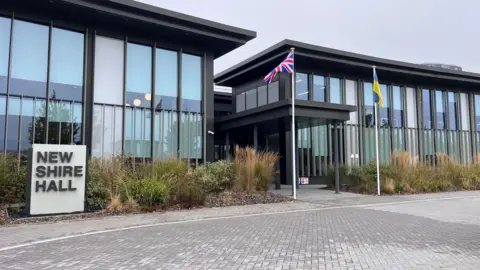
The council was criticised in court for its dismissive and defensive handling of concerns that included poor signage, unsafe crossings and poor lighting.
The court was told that when the health and safety watchdog issued an improvement notice in 2018, the authority appealed against the notice.
The council claimed it was "unwarranted and unlawful" as it had never been in breach of safety laws, the court was told.
It did not commission a safety review until after Ms Pitts' death.
The Busway was described as a "novel transport system" with "no national design standards, only recommended practices", by Ben Compton KC, who represented the council in court.
He said there seemed "to have been a dogged determination in treating the guided busway as a road".
"The emphasis seems to have been on the timetable and efficiency of the guided busway rather than... health and safety," he told the court.
What do the families say?
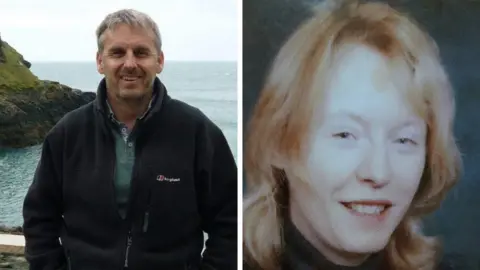 Family handouts
Family handoutsMr Moir's brother, Rob Moir, said outside court afterwards: "There are no winners here. It's taxpayers' money at the end of the day.
"Hopefully it will be sufficient to make sure that not just this county council but other people, other councils, wake up and make sure they apply the due diligence that they should to health and safety."
Ms Taylor's family thanked "the HSE for their tireless efforts in bringing this case to court".
"We hope that the lessons learned will lead to sustained safety improvements and help avoid tragedy, injury and suffering in the future," they said.
"Jenny was deeply loved by all of us, and we dearly miss her."
How has the council's approach changed?
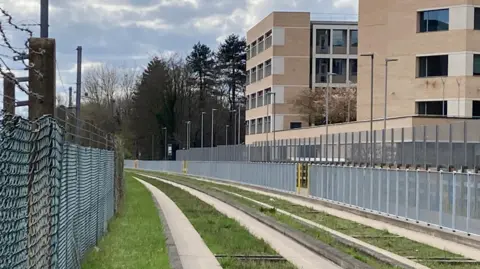 Jozef Hall/BBC
Jozef Hall/BBCThe council admitted two charges under Section 3 of the Health and Safety at Work Act 1974, relating to the public trying to cross the busway at designated crossings and being struck while moving alongside the Busway.
Stephen Moir, its chief executive since 2022, said he was "truly sorry for these failures" and offered the victims' families "full and unreserved apologies".
The Busway's safety regime now includes:
- Thorough and frequent inspections
- A rolling programme of risk assessments
- Strengthened incident recording, reporting and investigation
"A dedicated Busway operations safety team in place, and we have also installed bespoke fencing on the southern section of the Busway, reduced speed limits and are reviewing all the signs and lining along the route," he said.
"I'd like to reassure all those who use the guided busway, that we have learnt our lessons the hard way and changed our approach for the future.
"The Busway is and remains an important, accessible and safe public transport system for all the people who live in, work in, travel through or visit Cambridgeshire."
A 44-year-old woman remains in hospital after a crash involving a fire engine and two guided buses along the Busway in Northstowe on Wednesday.
Follow Cambridgeshire news on BBC Sounds, Facebook, Instagram and X.
